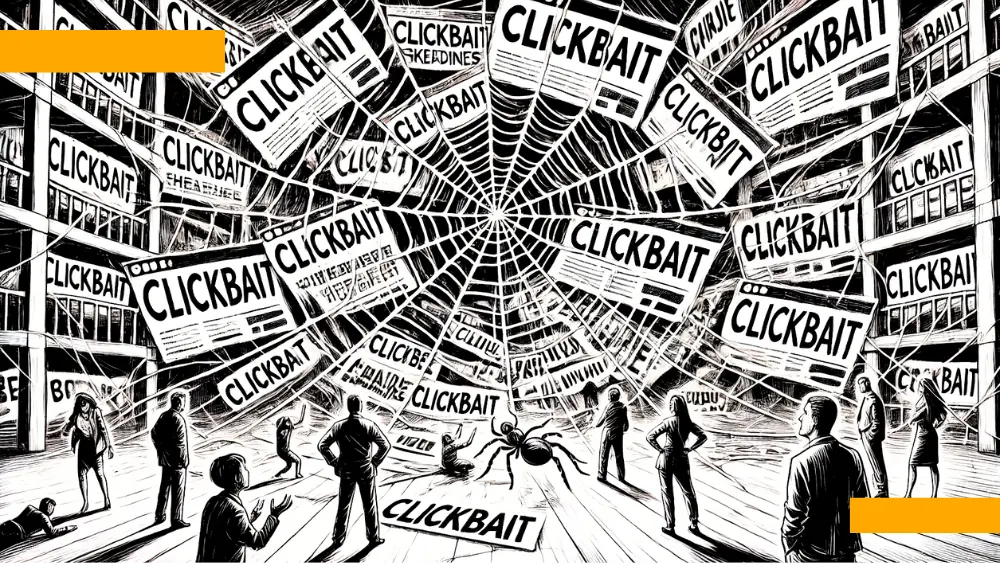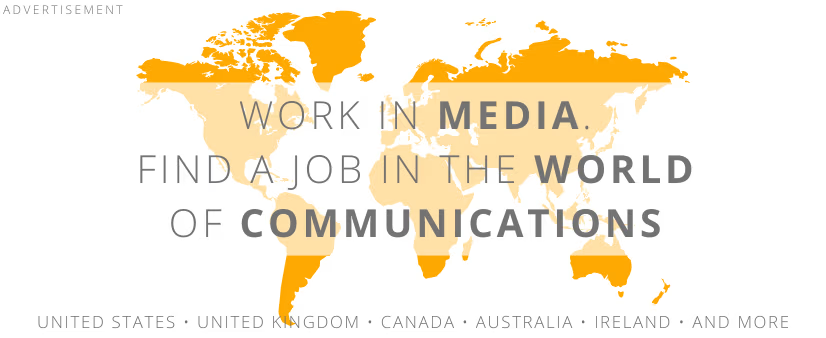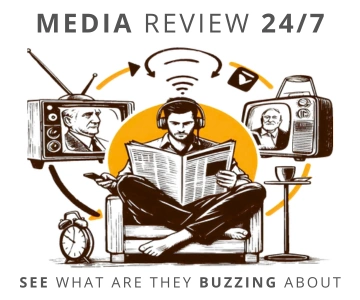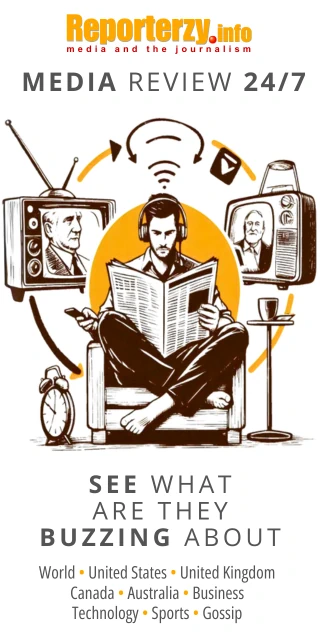 illustration: DALL-E
illustration: DALL-EHeadlines on the internet have become longer, more negative, and surprisingly similar to clickbait. Research conducted by Pietro Nickl, Mehdi Moussaïd, and Philipp Lorenz-Spreen from the Max Planck Institute for Human Development shows that since the beginning of the 21st century, there has been a significant change in how online media headlines are constructed.
To analyze around 40 million headlines from four major English-language sources - The New York Times, The Guardian, The Times of India, and ABC News Australia, researchers used NLP methods, sentiment analysis, and regression models to detect language changes. The results were published in the article "The Evolution of Online News Headlines" in Nature Humanities and Social Sciences Communications, revealing a clear trend toward more clickable, emotional content.
Longer and more emotional headlines
Over two decades, online media headlines have increased in length by an average of 25%. In 2000, a headline in The New York Times typically took the form of a short sentence fragment, like "Shell`s future in Nigeria in doubt." Today, they more often take the form of a complete sentence, similar to clickbait from Upworthy: "I`m No Supreme Court Expert, But I Kinda Think You Shouldn`t Be Able To Pay For This?".
The report shows that full sentences and questions are replacing traditional short headlines. This phenomenon is driven by growing competition for readers` attention online. Algorithms favor content that triggers reactions, such as clicks or shares, giving an advantage to longer and more emotional headlines.
Clickbait not just in tabloids
Interestingly, these changes are not limited to low-quality media. Researchers observed similar trends in high-reputation outlets like The Guardian and The New York Times. Negative headlines are now more common than positive ones, further emphasizing the dominance of emotion over facts.
- The number of headlines with a negative tone has increased by 30% over the past 20 years.
- More headlines include personal pronouns and questions to pique the reader`s curiosity.
- The number of headlines containing words like "why" and "how" is rising, indicating an attempt to draw readers into the narrative.
Algorithms and A/B strategies
Media are increasingly using A/B testing to optimize headlines. An example is Upworthy, which experimented with different variants to maximize click-through rates. From 2013 to 2015, this model dominated Facebook until the algorithm changed to favor more engaging content rather than mere clicks. As a result, clickbait-style headlines became somewhat less popular, although they are still widely used.
Although clickbait styling offers tangible benefits in terms of higher click numbers, it also raises ethical and social issues. It undermines trust in media and contributes to misinformation. Moreover, promoting negative content encourages social polarization, especially in media with extreme political sympathies.
| Headline Features | Increase from 2000 to 2025 |
|---|---|
| Length (number of words) | +25% |
| Negative wording | +30% |
| Personal pronouns | +20% |
| Questions and interrogative pronouns | +15% |
Research results indicate that these changes occur regardless of journalistic quality or political sympathies. This means that even reputable sources are adapting to the rules governing the online attention market, where the most engaging headlines prevail.
Can it be changed?
Experts believe that changing the algorithms that promote content on social media could solve the problem. An example is The Guardian, which placed a "Most Read" section next to "Most Shared" on its website, allowing users to make more informed choices.
A list of potential solutions includes:
- Increasing algorithm transparency on social media platforms.
- Media literacy education to help users distinguish reliable content from clickbait.
- Promoting socially valuable content rather than just visually appealing material.
Headlines on the web have ceased to be just information. They have become a product designed to sell emotions and clicks. While this trend may seem irreversible, it is essential to remember that changing algorithms could bring a more balanced approach to creating and consuming content online.
The research report "The Evolution of Online News Headlines" is available at
https://www.nature.com/articles/s41599-025-04514-7
COMMERCIAL BREAK
New articles in section Media industry
Advertising market 2025. Poland, Europe and the World
Marcin Grządka
The global advertising market is growing by 8.8% in 2025 and will reach a value of 1.14 trillion dollars. The industry result in Europe records slightly lower dynamics, at the level of 5.8%. In this comparison, Poland performs clearly above the average. We will record an increase of 8.9% this year and a value of 18.56 billion PLN - estimates WPP Media in the annual report "This Year Next Year".
The print media market 2025. Three global trends
Krzysztof Fiedorek
The market value is 359.53 billion dollars, yet the erosion is visible to the naked eye. The decline for newspapers will amount to -2.3 percent. Despite this, print retains strength: it generates 76 percent of subscription revenues and enjoys 82 percent consumer trust. The future of the industry is defined by hybrid strategies and niche specialization.
Journalism in the age of AI. Why people prefer humans over machines
Krzysztof Fiedorek
Only 12% of people accept news created solely by AI, while 62% prefer those written by humans. At the same time, only 19% notice labels indicating the use of artificial intelligence, while younger audiences ask AI to explain the content to them. These are the findings of the Reuters Institute report on artificial intelligence in media.
See articles on a similar topic:
Books, e-books and audiobooks about the media and for journalists [LINK]
AUTOPROMOCJA Reporterzy.info
Thanks to cooperation with the Amazon, we may suggest you wide offer of great reading opportunity. Studies on the history and media market, interviews, reports and photo guides. Ordering and delivering a book now only takes a few moments. We invite you for a good lecture!
Poles on the Internet. RegionyNEXERY 2024 Report
KFi
The Internet not only connects people but also changes their daily habits in ways that seemed unattainable just a few years ago. Over 40% of Poles work remotely, and IoT devices are gaining popularity in rural areas. The #RegionyNEXERY 2024 report reveals surprising facts about the digital reality.
Deepfake Blurs Truth and Falsehood. Human Perception Research
KFi
Studies indicate that only 60% of deepfake images can be correctly identified by humans. As AI begins to dominate content production, the problem of differentiation fatigue grows – users lose confidence in assessing the authenticity of information and fall into cynicism.
Blogs in E-commerce. Report by Elephate and Senuto
KrzysztoF
The average number of indexed articles on e-commerce blogs is 565, with each post attracting 347 readers per month. The health industry generates the highest organic traffic per single article. The authors of the "E-commerce Blog Ranking" take a behind-the-scenes look at the commercial blogosphere.






























